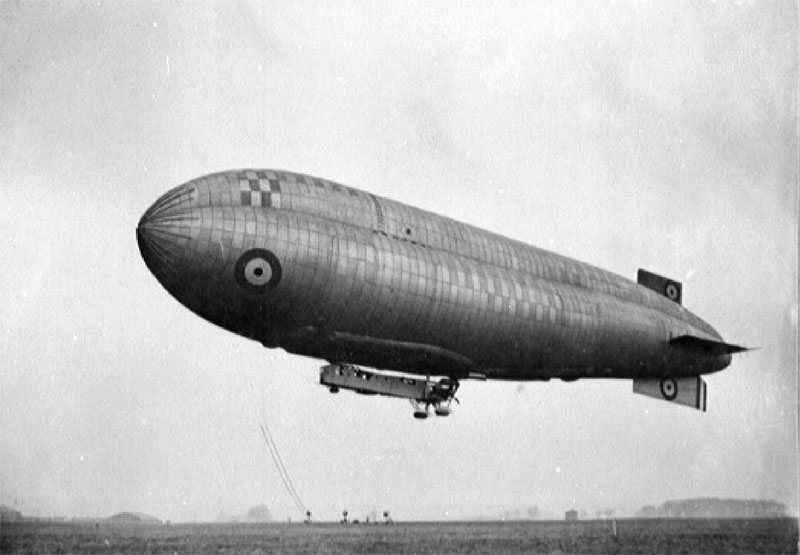
By Brian Turpin
With a fascinating look at the development of the North Sea class airship and dramatic eye-witness accounts from P. E. Maitland, perhaps one of the best known non-rigid airship captains, this article paints a vivid picture of the challenges and dangers faced by both officers and crews. Following NS3 right up to its sad loss this feature is based on articles originally published in Cross & Cockade in 1977 and 1979. We thank Brian Turpin for kindly allowing us to publish it here together with photographs of NS3 and her crew.
The North Sea type of non-rigid airship, as the name implies, was designed for use on long-range over-sea patrols in collaboration with the Grand Fleet whose main area of operations was the North Sea. The largest non-rigid built for the Royal Naval Air Service during the First World War, these ships were designed and built at the Naval Airship Station, Kingsnorth, on the north bank of the Medway in Kent, only a few miles from the great naval dockyard at Chatham. The construction of six North Seas was approved in January, 1916, and the first example, NS1, carried out her initial flight trials on 1st February, 1917.
The preliminary trials of NS1 were regarded as most satisfactory, a speed of 50 mph being achieved with the two Rolls-Royce engines running at only 1,250 rpm, and the ship proved easy to handle. After some modifications to the fuel system, two further flights were carried out early in March. The second of these flights consisted of a cross-country from Kingsnorth, via Maidenhead, Farnborough and Guildford, back to Kingsnorth. This trip having been completed satisfactorily, the ship was dispatched to the airship station at Pulham, Norfolk, on 8th April, 1917, for further trials. During the following weeks a number of flights were made which revealed a few minor snags but after these had been cleared it was decided to give the ship a full-scale endurance test.On 5th June, NS1 started her trial but after being in the air for just over 16 hours, the universal joint broke on one propeller transmission shaft and the ship was forced to return to base. This was a snag that was to crop up frequently during the North Seas’ operational life and was eventually cured only by redesigning these ships’ transmission systems during 1918, and in some cases re-engining with Italian Fiat engines. However, on 26th June, at 6 am, NS1 left the ground for another attempt and remained airborne until 7.22 am on the 28th, a flight of 49 hours 22 minutes during which 1,536 miles were flown. Only minor technical troubles were experienced. This was an altogether remarkable flight which was a record performance for a British airship of any type at that time.
Early in June, the trials of NS2 were conducted at Kingsnorth and as these proved satisfactory it was decided to make an endurance trial similar to that made with NS1. On 27th June – incidentally the second day of NS1’s record flight – NS2 left Kingsnorth for a flight which was planned to take it via Cranwell and Pulham, back to Kingsnorth. However, due to some reason which was never fully explained, the ship began to loose gas, became unmanageable, and was wrecked in an attempted landing near Stowmarket, Suffolk.
During July, NS3 carried out her trials, and on 22nd July flew non-stop to East Fortune from Kingsnorth, a flight of eleven hours. This was to be her operational station. By the end of the year she had been joined by NS1 from Pulham (6th September) and NS4 from Kingsnorth (15th October). On 12th December, NS5 also set out from Kingsnorth, but unfortunately when she was within sight of East Fortune both engine failed and she drifted with the wind for about ten miles before they could be restarted. The engines continued to give trouble, first one engine stopping and then the other, and so it was decided to make a free balloon landing at Ayton as the ship was unable to make any way against the wind. This was done but the craft was damaged beyond repair in the process due to the difficulty of handling such a large airship under these conditions without an adequate landing party on the ground to assist.
At this point I must introduce one of the leading characters in the story of NS3, Percy Maitland who in late 1917 was an airship captain flying Coastals out of Longside. P.E.Maitland had joined the Royal Navy in 1908 and like many other young midshipman had been attached to the RNAS in 1915 for airship work. After a period flying SS type airships from Anglesey and Folkestone, Maitland transferred to Coastals in 1917 :
“My first view of a North Sea airship was off Fraserborough in September 1917, and we, in C14, were coming home after a nine hours’ exercise with the Fleet, which had passed some eighty miles seaward of Longside on its way back to Scapa Flow. We envied the larger craft, the comfort of their enclosed car and the power of their engines. We knew that two of these new ships were operating from East Fortune, and we looked forward to seeing them when they refuelled at Longside that night. In the shed NS1 and NS3 looked impressively large, though they seemed to have a spider’s web of rigging above the car.
The North Seas were big airships by any standard, the 260 feet long envelope having a capacity of 360,000 cu.ft. Its gross weight was about twelve tons and it carried a crew of ten. In its original form it was powered by two Rolls-Royce Eagle I engines which gave it a full speed of about 60 mph. Like the Coastal and Coastal Star types, the North Sea envelope was based on the Astra Torres design with a tri-lobe cross-section. The weight of the car, engines and so on were carried by a complicated system of suspension cables which passed up into the envelope at the bottom ridges and then connected to cords which spread out like fans to the upper ridges on either side.
The normal crew consisted of a Captain and Second Officer, a Coxswain and Second Coxswain, two Engineers, two W/T Operators and two Air Gunners. The Captain was in overall charge of the airship, and with the Second Officer looked after the navigation, maintained height and also kept the internal gas pressure within limits. The Coxswain was responsible for the rest of the crew and for the care and maintenance of the ship on the ground. In flight, he or the Second Coxswain steered the ship with a wheel which worked the rudder, and was seated at the very front of the control car which
had extensive glass windows affording a magnificent view ahead.
The W/T Operators had their own compartment just aft of the Captain’s position at the front of the car. As well as their wireless sets, they had Aldis lamps for visual signalling and International Signal Flags which could be lowered down beneath the control car. These were particularly useful for communicating with foreign ships as there was no language problem with the internationally recognised signals.”
The Air Gunners main task was to act as look-outs while on patrol. There was always at least one Lewis gun mounted at the rear of the car which could be used for attacks on submarines or for sinking mines. They also acted as cooks and could fry or stew food in a pot or pan heated by the exhaust gases from the engines. Care was necessary, as Percy Maitland found out:
“I lost what was probably the first eggs and bacon ever to be cooked in the air, by opening the cut out from the exhaust too widely. It was only with difficulty that I prevented the frying pan from being blown into the propeller. This had happened already to the eggs and bacon, and it might have broken the propeller and holed the envelope above.
These ships were certainly impressive to look at, but in conversation with their crews we heard that in fact the engine installations gave continual trouble. In order to enclose them in a streamline ‘power egg’, the engines had long and heavy propeller shafts which, being lightly supported, strained the engine gears.
The two NS ships remained at Longside undergoing extensive repairs to their engine structures. Up to then I had been only faintly interested, but in December I was appointed as Second Officer to NS3 under Flight Commander J.S.Wheelwright, DSC, and just before Christmas we flew back to East Fortune, where, to our disgust, we heard that all the NS ships were to be grounded for redesigning.”
The continual trouble with the transmission gear had finally lead to this drastic measure being taken. The design team at Kingsnorth began a hasty redesign of the power car and, among other things, looked at the possibility of using the Fiat engine in place of the Rolls-Royce, and employing direct drive to the propellers instead of the machinery provided in the original design. Despite these problems, and the loss of two ships of this type during their first months of service, official interest in the design remained, largely due to the lack of any suitable alternative, and in November a further six were ordered.
Meanwhile, at East Fortune others were having ideas about how the North Sea could be improved, ideas which were born of practical experience of the type under operational conditions. Percy Maitland continues:
“Johnny Wheelwright was an artist by profession and a man of considerable originality and drive. The station’s Engineering Officer, Lt.Cdr. A.S.Abell, RNVR, was one of two outstanding brothers who later proved their worth with the Bristol Aeroplane Company. Together, Wheelwright and Abell made plans for reconstructing the ship, and by January 1918 had obtained permission from the Admiralty to go ahead.
“Briefly, the idea was to do away with the long propeller shafts and to raise the control car level with the engineer’s car. This latter was mounted on a frame with an engine on either side. The control car and engineer’s car were connected by a flexible walking way, and this was to be faired in with a light framework with canvas sides. The two cars were to form a single unit, and the crew could move about from the coxswain’s position in the bow to the engineer’s car aft, without too many gymnastics in the open. There was more room for the crew, and air resistance was reduced as the car was much closer to the envelope than in the original type.
Surprisingly, this proved to be possible without altering the fifteen miles of cord and suspension wires inside the airship’s envelope. At the same time, the petrol tanks were fitted into the underside of the envelope, being suspended from the two ridges. They were therefore inside the envelope. Many other small improvements were also made.
By the beginning of March all was completed at East Fortune and NS3 certainly had a more efficient look about her. On 11th March 1918, with Admiralty officials on board, we undertook her test flights most successfully, and on the following day she did an eight hours’ trial with a full speed of more than 60 mph.
We then bombarded the Admiralty with requests for permission to start patrolling, but without results. We were aware that at Kingsnorth the official redesign was being worked on feverishly, so that when at last on 3rd April permission was obtained to fly a three-quarters power duration flight over land we headed for Kingsnorth. On arrival we circled slowly and waited for a crowd to gather. Our satisfaction was momentarily checked by a hissing sound which we found was caused by petrol dripping from a leaky tank on to the hot engine exhaust pipe. However, this was put right before the engine caught fire, and in due course the landing party ‘flashed’ up to us asking whether we wished to land. To this we replied, ‘No, we are returning to base.’ and turned north again to Edinburgh. We completed the 816 miles in 22 hours which certainly constituted a record for British airships at that time.”
The official report of the trip stated that the ship had left Longside at midnight and returned after its successful flight at 11 pm. The engines ran perfectly throughout the flight. The starboard engine was not stopped and the port engine only for about five minutes owing to the breaking of the dynamo belt.
“However, it was not until 17th April that we did our first convoy escort, and from 20th to 22nd April completed a flight of 55 hours with various convoys, the longest flight made to that date by any non-rigid airship. We would have stayed out longer had we not been recalled owing to the approach of bad weather. The advantage of being out of the airstream behind glass, being able to walk about and talk to the crew, and of all the crew being able to rest when off duty, proved an enormous benefit and increased considerably the efficiency of the anti-submarine lookout.
It was not until 7th May that we had our first hope of success. When returning with a south bound convoy off Montrose, we sighted oil coming up from the bottom of the sea in an area in which no wreck had recently been reported. We flashed a signal to a nearby destroyer and told her we were going to bomb an oil streak, and dropped three 230 lb bombs. The destroyer dropped depth charges on our bomb marks, and up came quantities of oil and some wreckage. They lowered a whaler and later signalled ‘British Submarine’. Our consternation can be imagined, but luckily a parcel was recovered addressed to submarine K17 which had been lost in the North Sea earlier that year, so we had in fact only bombed a wreck!
The following day we went out and found thick fog outside the Firth of Forth. It is an eerie feeling rushing through thick fog, but in an airship, as long as one kept away from land and high enough up to clear the sea, it was a peaceful pastime, until the time came to make a landfall again. However, after a couple of hours we gave it up and luckily found the fog had cleared over our base.
Next day was calm again, and off Peterhead, Wheelwright decided to try the ability of the ship to land on the water, while we hailed a trawler. Unfortunately the trawler did not appreciate that we were drifting down wind and came up astern of us. Her mast fouled our tail fin and it was only by dropping ballast and ascending suddenly that we averted a tragedy. However, we started our engines and later landed at Longside to check the damage, but luckily nothing serious had been touched and the envelope was not holed.
During May, NS3 flew over 130 hours, including a patrol of 33 hours, and another during which she escorted a convoy continually for 20 hours returning to base only when ordered to do so because of increasing winds. On this occasion some difficulty was experienced in returning due to the wind strength in places reaching 45 to 50 mph with gusts of up to 60 mph. The fact that the ship was able to return safely, despite the adverse conditions, is of interest in view of subsequent events.
On 31st May NS3 made a night flight over Edinburgh and thence over the Grand Fleet, near Rosyth, with the object of testing the anti-aircraft work of the Fleet and Shore Batteries. She cruised over these at altitudes which varied between 6,500 and 7,600 feet from 10 to 11 pm, before returning to the vicinity of East Fortune where she remained until 4.15 am on 1st June, when she landed. During this flight, NS3 attained a maximum altitude of 10,000 feet which was another record for this type.
“In early June we started towing trials with the destroyer HMS “Vectis” as the ability to be towed at speed could be of great advantage if an airship broke down or ran short of fuel. We were making good progress and could be towed at almost 20 knots. On the last trial we came down on the sea and took two of the ship’s officers in place of two of our own crew. We felt that we had a handy and adaptable airship.”
On 21st June, orders were received for NS3 to proceed from East Fortune to escort a south-bound Scandinavian convoy. The normal crew of ten was carried, with Captain Wheelwright in command assisted by Captain P.E.Maitland, CPO C.W.Printer, PO H.Hodgeson who were the coxswains, and six other men. It was a far from pleasant summer afternoon when the ship slipped from the hands of the ground party at 5.10 pm and proceeded northward. A west-south-westerly wind of 20 to 25 mph was blowing and occasional rain squalls swept across the airfield. On board NS3, the crew settled down to their routine patrol duties as the ship crossed the Firth of Forth and headed past May Island and Fife Ness to join the convoy some two hours later off Aberdeen.
Captain Maitland takes up the story again:
“While the ship climbed to patrolling height, the coxswain sitting in the bows of the car at his compass was steering the course given to him by the navigating officer, Cpt. Wheelwright. My task at this stage was controlling the height at which the ship flew by means of a wheel mounted in a fore and aft direction which worked the elevators. I also controlled the pressure inside the envelope, the atmospheric pressure outside decreasing and the pressure inside the ship increasing relatively. The pressure range was small: if it was too low the envelope became flabby and would loose shape, and if too high there would be an undue strain on the envelope fabric. So, the officer acting as height coxswain had to keep a careful eye on the pressure gauges, flying pressure being about 30 mm of water. In turbulent weather the up and down currents of air made this doubly important. If pressure dropped he would work a winch to lower a scoop behind the propeller, and so blow air into either the forward or rear ballonets. If it rose too high he would open either the front or rear ballonet valves. There were also two gas valves from which gas could be let out, to reduce pressure quickly, or reduce lift if the ship was too light. These valves were mounted on a frame, each valve control wire with a wooden block of distinctive colour and shape, to avoid error even in darkness.
In addition there was also a red coloured tape, which passed through the envelope to a rip panel at the top which could be pulled out if it was necessary to deflate the ship quickly. This tape ripped the panel out leaving a long split in the envelope, and needless to say great care was taken to see that this was never pulled by mistake!
As mentioned before, the W/T operator sat in a little compartment just behind the navigator’s table, and lowered his aerial and opened the W/T watch with the home station. The air gunner was on lookout aft and the one off duty was preparing the ingredients for the first meal. The engineers, having set the engines at the revolutions indicated by the Captain on the engine room telegraph, were keeping a general eye on the engines. They could walk around either side of both engines so that petty repairs and maintenance were easy. The engineer on duty also opened the petrol tanks as required and kept a check on fuel consumption.
As soon as the sea was reached, it was possible to make a good estimate of the direction and strength of the wind by the ‘wind lanes’ on the surface of the water. When accurate navigation was necessary the wind velocity was checked every hour by slowing down and turning the ship into wind. As the airspeed dropped one could see the W/T aerial moving over the sea more and more slowly until at length it was stationary. A glance at the airspeed indicator then gave the strength of the wind, and the ship’s compass heading the direction. At the same time one could see whether the ship was heavy or light by noting whether it sank or rose when steerage way was lost, and also whether it was nose or tail heavy. The navigator on duty worked out the course to steer to make the required rendezvous and the estimated time of arrival, while the crew settled down to ‘watch routine’. The officers scanned the forward view, using binoculars if necessary, while the air gunner and crew off duty kept a watch abeam and aft. The control car of the North Sea airship was sufficiently far forward of the engines for their noise to be slight. Conversation in the car was easy, so that orders and reports could be heard readily.
Sighting a convoy was usually impressive. Often as many as forty merchantmen of all sizes, ages and nationalities would appear out of the haze, plugging steadily along in three columns under the care of perhaps a couple of destroyers and some armed trawlers. At intervals they would alter course in a series of zigzags to throw off submarines that might be trying to work ahead of the convoy. Some ships would be spick and span from a recent overhaul in port, whilst others by their rusty hulls and salty upper works showed the marks of many months at sea.”
With the airship on station, the convoy proceeded south without incident until about 9 pm when a crew member spotted an oil slick on the surface of the sea. They were then in a position about five miles east of Bervie Bay. Cpt. Wheelwright ordered the ship to be brought about for a closer look at what the crewman had seen. The oil slick might indicate the position of a submerged submarine and all sightings had to be investigated. All the crew were at action stations as the ship came over the slick again and the signs were sufficiently strong to warrant further action. One of the escorting destroyers was signalled and left its station to steam over to the airship’s position. On reaching the spot it discharged two depth charges. Meanwhile, NS3 manoeuvred overhead and dropped two 230 lb bombs, only one of which exploded. The oil reaching the surface now increased, but as the convoy was moving ahead NS3 left the destroyer to continue observations and the airship returned to its escort duties.
“After a few hours of this it was most welcome to hear a bustling and see the air gunner clearing the chart table and laying a meal of hot stew that he had cooked on the engines – a welcome change compared with a bit of chocolate and iron-hard ration biscuit that used to tide one over the six or seven hours in the open cockpit of the smaller airships.”
During the late evening the wind gradually increased until by midnight it had reached some 35 mph. Forty minutes later it was more than 50 mph, and as it seemed certain that the wind was going to increase in strength still further it was decided to return to base. A course was set for the station at full speed, NS3’s position at that time being seven miles south-east of Bell Rock.
By 3.10 am, May Island Lighthouse could be seen due west of the ship and, with the wind now reaching over 55 mph, severe turbulence was being encountered from the land. NS3 finding itself in a position due east of East Fortune, turned towards the coast at Dunbar, but as the shore was approached the violence of the bumps increased and she became very difficult to handle; so much so that she had to turn out to sea again.
“It became more and more difficult to control both the ship and the pressure inside the envelope, owing to the violent up and down drafts. This meant pulling on valves to let the air out of the ballonets when the pressure was too high, and lowering the air scoops when the pressure was too low. While the Captain was struggling to keep the ship at a steady height with the elevators my job was to keep the pressure within bounds. The work of lowering the scoops when pressure dropped suddenly, and hoisting them up again with a hand winch, and hectically swinging off on the valves when pressure rose suddenly, had me dripping with sweat.”
Three attempts to cross the coast were made and when she finally succeeded the turbulence was so severe that the crew were in danger of loosing control of the ship. The bows were lifted up with so much force that full down elevator failed to bring the ship back on to an even keel and it was necessary to reduce engine power to regain control. This caused the ship to drift backwards towards the sea, so power was again increased and NS3 was brought close to the ground where it was hoped the wind would be less strong. However, the up currents were so powerful that the ship was lifted bodily to 1,500 feet at which height, even with both engines running full out, the ship continued to drift backwards. Capt. Wheelwright then ordered the ship to be turned down wind with the object of flying back out to sea and then going round the headland and approaching East Fortune from windward.
By this time conditions inside the control car were chaotic. Loose pieces of equipment were flying about in all directions and W/T gear and other stowed items were beginning to break free. Strong drafts of air were blowing in through the open side windows and the constant pitching of the car made it extremely difficult for the crew to remain at their stations. As the ship turned down wind she began to descend rapidly and it soon became obvious that she was very heavy, having apparently lost a great deal of gas in the very turbulent conditions and the rapid changes of height that these had brought about. Full up elevator was applied, but although the bows rose some thirty degrees above the horizontal, and more power was given in an attempt to make the ship climb, NS3 continued to fall. It was now certain that in a few seconds the ship would strike the water. In a last desperate attempt to avert disaster the engines were rung down to slow. The engineers, although clinging frantically to the structure inside the power car, immediately answered on their telegraphs and reduced power. The helm was put hard over in an effort to bring the ship back into wind, but before she could respond the stern struck the water at a speed of at least 70 mph. The power car was ripped off by the force of the impact. It sank instantly with the two engineers still inside.
“In a few seconds all was quiet as we drifted with the wind. I think after the hours of severe struggle we all felt relief for at that moment there was nothing we could do. Having shed the weight of the engines and engine car the airship rose slowly to some 500 feet, though hydrogen must have been pouring out of the tears in the envelope. I remember Wheelwright shaking hands with the coxswain, PO Hodgson, RN, and saying ‘goodbye’, and I could hear the clack of Davis the W/T operator trying to flash a signal to the lighthouse on his Aldis lamp. Then the ship slowly turned bows down until she was vertical and we were standing on the uprights of the car, one above the other. Then with a smack she hit the sea and it was dark.”
The triplex glass in the front of the control car smashed inwards and foaming water rushed in to engulf the men. The envelope burst amidships and came down over the submerged car in which the crew were now trapped. With the control car full of water the crew struggled to escape, forcing themselves through the big side windows and fighting their way to the surface.
“On impact, I inadvertently said, ’Oh’, and swallowed a mouthful of salt water and felt in the dark for the handle of the door which was somewhere alongside me. I had luck, opened it, dropped out and sank some depth. When I came up the whole envelope had drifted clear of me and I could see it some ten yards away with the edge of the envelope trailing along like a giant tablecloth, while the aft part that was still inflated rose some thirty feet giving the stern a whale-like look.
I joined the Captain and Second Coxswain who were already on the flat part of the envelope. After a short time an air gunner popped up nearby and was hauled on too. Then there was a pause of several minutes and the W/T operator, LAC Davis, came up looking very blue. He had been at his desk further aft in the car and after the ship had sunk he had some difficulty in the dark in finding the strap which lowered his window. However, he held his breath and eventually got the window open and struggled out. It was dark and the envelope covered the water for some twenty yards with a lot of wire and wreckage below it. At last he ran short of breath and took a gasp, but luckily struck a pocket of air trapped under the envelope and got enough to hold out until he broke surface.”
During the last few minutes of NS3’s flight, Davis had attempted to signal the Barnes Lighthouse but had seen no reply. A minute after he had reached the surface, AB Merritt came up in a very exhausted condition. There were no other survivors.
“The two engineers were no doubt drowned when the engine car hit the sea, and the Coxswain, one air gunner and one W/T operator probably got entangled in underwater wreckage. We survivors were lucky to find a portion of the envelope flat on the water as it might easily have been rising steeply from the sea, and we could not then have got a hold on the slippery rubber fabric.”
The great envelope of NS3 spread out on the surface of the sea and the men clung on as best they could. The stern was still rising above the surface and, acting like a sail, was dragging the whole wreck through the water.
“It was a grim dawn with the early light on the grey sea and distant coast. Our little party collected together while the fabric slowly sank. Eventually, a destroyer arrived , took off the survivors and sank the airship by gunfire – a sad end to a good ship and a devoted crew.”
The destroyer was HMS “Moy”. An attempt was made to take the wreck in tow, but after three tow lines had been broken NS3 was fired on and left to sink beneath the waves.
* * *
Despite the troubles which plagued the North Sea type of airship during its early war service, these ships continued in production right up to the end of the war and for a short time afterwards. Numerous modifications solved many of the problems and by the time of the Armistice they were doing valuable war work. On 11th November, 1918, six of these big airships were in service at operational stations: NS7 and NS8 at East Fortune, and NS4, 6, 11 and 12 at Longside. In addition NS14 to NS18 were being completed at Kingsnorth and several of these were flown after the war. During the course of these post-war activities, NS11 made a record flight of 101 hours during which some 4,000 miles were flown; a flight which was something of a vindication for the designers of the ship and the aircrew who flew in them.
Of the surviving crew members, PO Hodgeson, LAC Davis and AB Merritt all returned to active service. Captain Wheelwright was posted to Kingsnorth, where he was engaged in production and experimental test flying, while Percy Maitland was given command of his own North Sea at Longside, NS9, completing his war service at Longside in command of NS12.
Brian J. Turpin

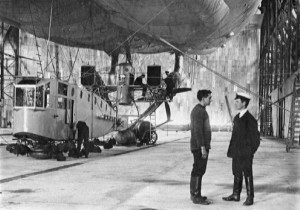
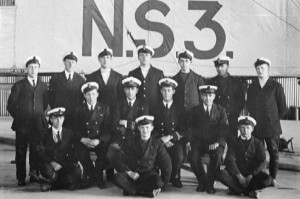
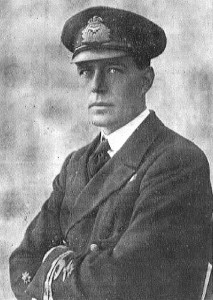
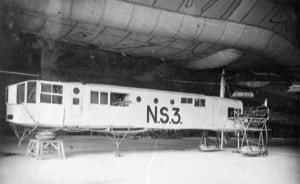

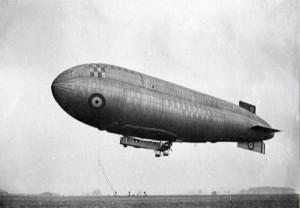
 NS11 – As Bright As Day is very much a work in progress and has been made possible by the generous and enthusiastic support of many individuals and organisations. If you have any information, records or material relating to British NS Class airships we would be very interested to hear from you – especially anyone related to members of the crew of NS11 or any airship of the class during their service with the RNAS or RAF during and beyond WWI.
NS11 – As Bright As Day is very much a work in progress and has been made possible by the generous and enthusiastic support of many individuals and organisations. If you have any information, records or material relating to British NS Class airships we would be very interested to hear from you – especially anyone related to members of the crew of NS11 or any airship of the class during their service with the RNAS or RAF during and beyond WWI.
Latest